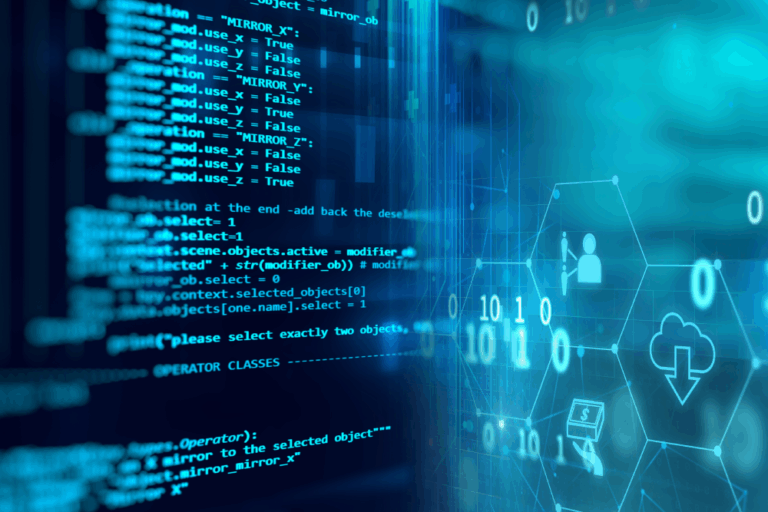
Data science continues to be one of the most in-demand and well-paid fields in tech. But many people are still intimidated by the idea of learning it—thinking it requires a PhD in math or years of coding experience.
The truth? In 2025, learning data science from scratch has never been more accessible.
This guide will walk you through the most efficient path—from beginner to job-ready—with tools, tips, and free resources you can start using today.
What Is Data Science, Really?
The simplified definition
Data science is about using data to extract insights, make decisions, and build intelligent systems.
A data scientist typically:
- Collects and cleans data
- Analyzes it using statistics and programming
- Builds models (sometimes AI models)
- Communicates results with visualizations or reports
It’s a mix of math, programming, and business thinking.
Common job titles
- Data Scientist
- Data Analyst
- Machine Learning Engineer
- Business Intelligence Analyst
- Data Engineer
Each has different focuses—but they share core foundations.
The 4 Pillars of Learning Data Science
1. Programming (usually Python)
Python is the most popular language in data science. It’s readable, flexible, and has libraries for everything—from cleaning data to deep learning.
Start with:
- Variables, loops, functions
- Working with files
- Pandas (dataframes)
- NumPy (mathematical operations)
- Matplotlib/Seaborn (charts)
Resources:
- DataCamp
- Kaggle Python course
- Google Colab to code in the browser
2. Statistics and math
You don’t need to be a math genius—but you do need the basics:
- Descriptive stats (mean, median, std dev)
- Probability and distributions
- Correlation vs causation
- Hypothesis testing
- Linear algebra (for machine learning)
Resources:
- Khan Academy – Statistics & Probability
- StatQuest on YouTube
3. Data visualization
Knowing how to explain findings visually is critical. You’ll use tools like:
- Matplotlib / Seaborn (Python)
- Tableau or Power BI
- Plotly (interactive dashboards)
The key is: clarity over complexity. Focus on the story your data tells.
4. Machine learning (optional at first)
Once you’re comfortable with the basics, start with simple ML models:
- Linear regression
- Decision trees
- Classification (logistic regression, k-NN)
- Model evaluation (accuracy, confusion matrix)
You can explore more advanced topics later (neural networks, NLP, deep learning).
The Modern Learning Path (2025 Edition)
Step 1: Learn Python + basic statistics
Spend 4–6 weeks here. Use small datasets and run experiments. Learn by doing.
Step 2: Start small projects
- Analyze your Spotify history
- Visualize your expenses
- Clean and plot public datasets from Kaggle
Step 3: Explore SQL
SQL is the language of databases. Learn:
- SELECT, JOIN, GROUP BY
- Filtering and sorting
- Subqueries
Tools: Mode Analytics, DB Fiddle, LeetCode SQL practice
Step 4: Learn about data cleaning and wrangling
Most of your time as a data scientist will be spent cleaning messy data. Learn how to handle missing values, duplicates, bad formats.
Pandas and Python are great for this.
Step 5: Build 2–3 real projects
Document them, write a blog post, and upload code to GitHub.
Ideas:
- Predict house prices using regression
- Classify tweets with sentiment analysis
- Analyze COVID or inflation data trends
Step 6: Understand business context
Data is only useful when it solves a business problem. Learn how to frame problems like:
- “Which users are likely to churn?”
- “What product features correlate with growth?”
- “How do we forecast revenue next quarter?”
Top Free Tools to Learn with in 2025
- Google Colab – code Python in the cloud, no setup
- Kaggle – datasets, competitions, code notebooks
- DataCamp (free tracks) – structured lessons with feedback
- Jupyter Notebooks – local, interactive coding
- Pandas Profiling – auto data summary in one line
- ChatGPT + Code Interpreter – ask for help while coding
These tools make it easier to learn solo, without needing a bootcamp or degree.
Do You Need a Degree?
No. Many data scientists are self-taught or come from other fields (economics, physics, marketing, etc.).
What matters is your ability to:
- Work with real data
- Communicate clearly
- Think critically
- Build and explain your solutions
A strong GitHub + portfolio often matters more than a diploma.
Tips to Stay Motivated
- Learn with friends or communities (Reddit, Discord, Twitter)
- Break your goals into weekly tasks
- Don’t compare your beginning to someone else’s middle
- Accept frustration—it’s part of the process
- Share what you learn (LinkedIn, blog, YouTube)
Final Advice
You don’t need to know everything to start. Focus on learning just enough to build, then build more to learn better.
In 2025, data science is more open, flexible, and inclusive than ever. If you’re consistent, curious, and focused on solving problems—not just watching courses—you’ll be ahead of 90% of learners.






